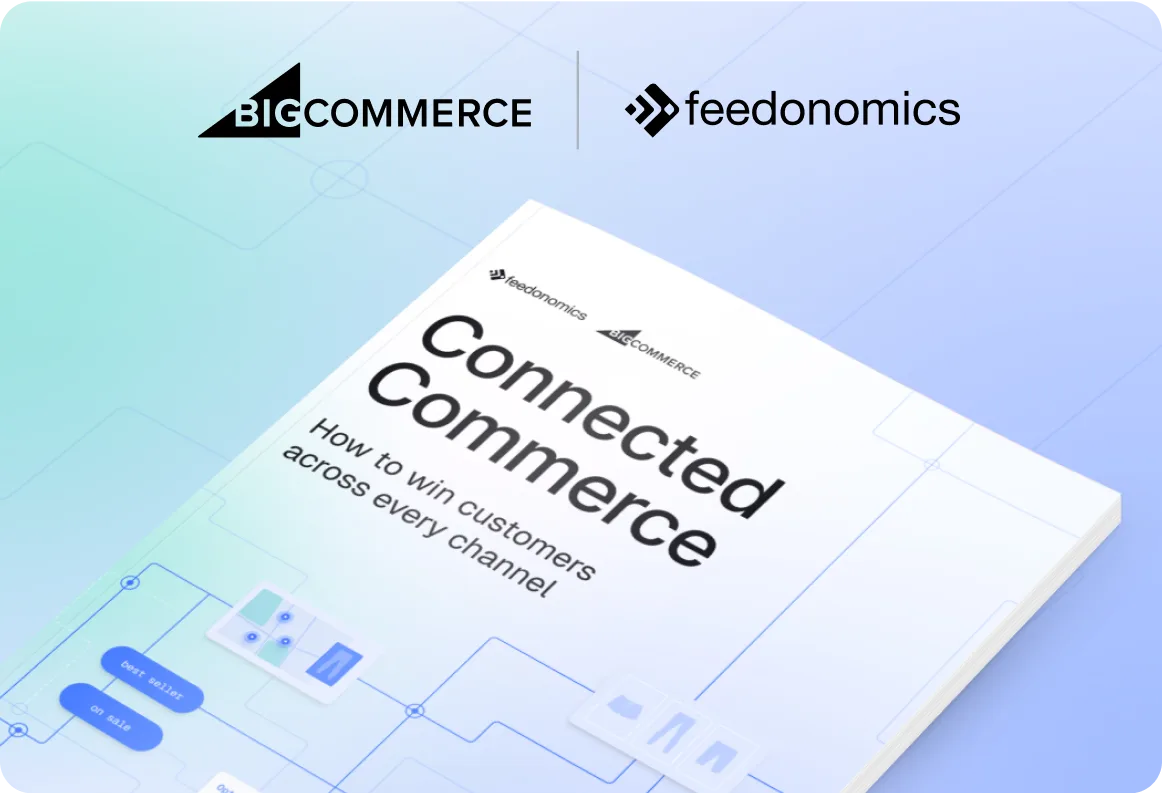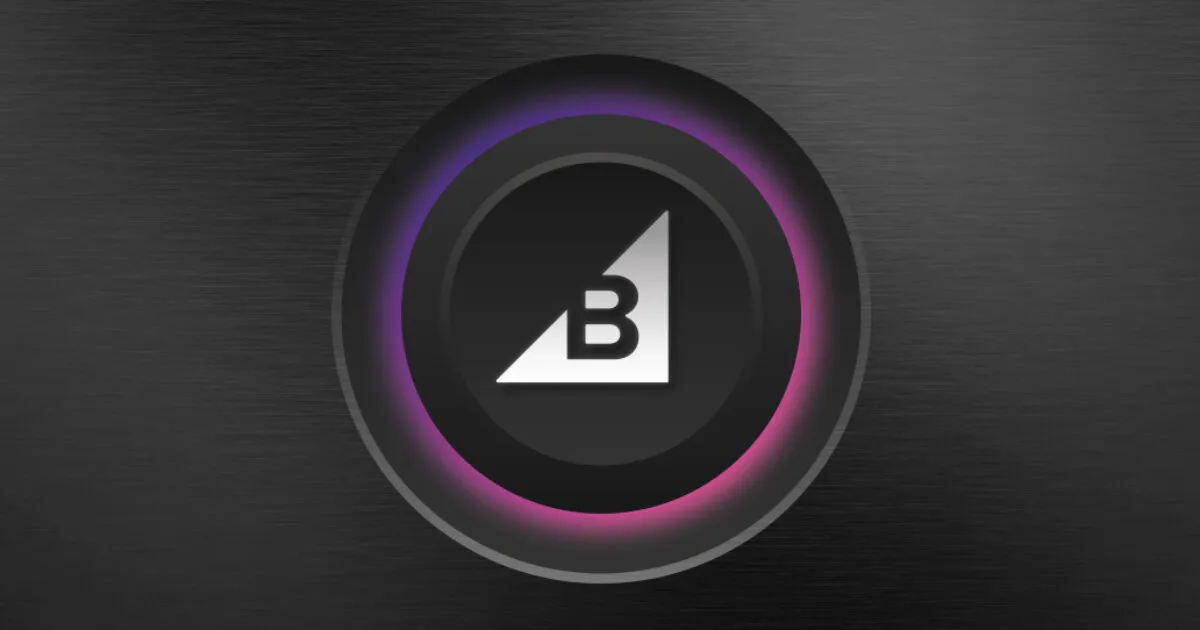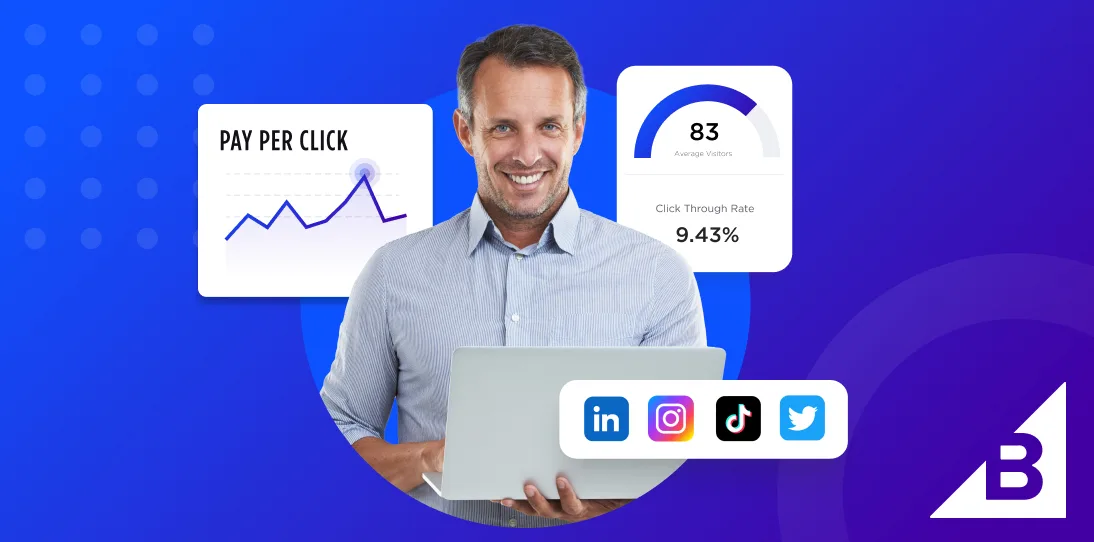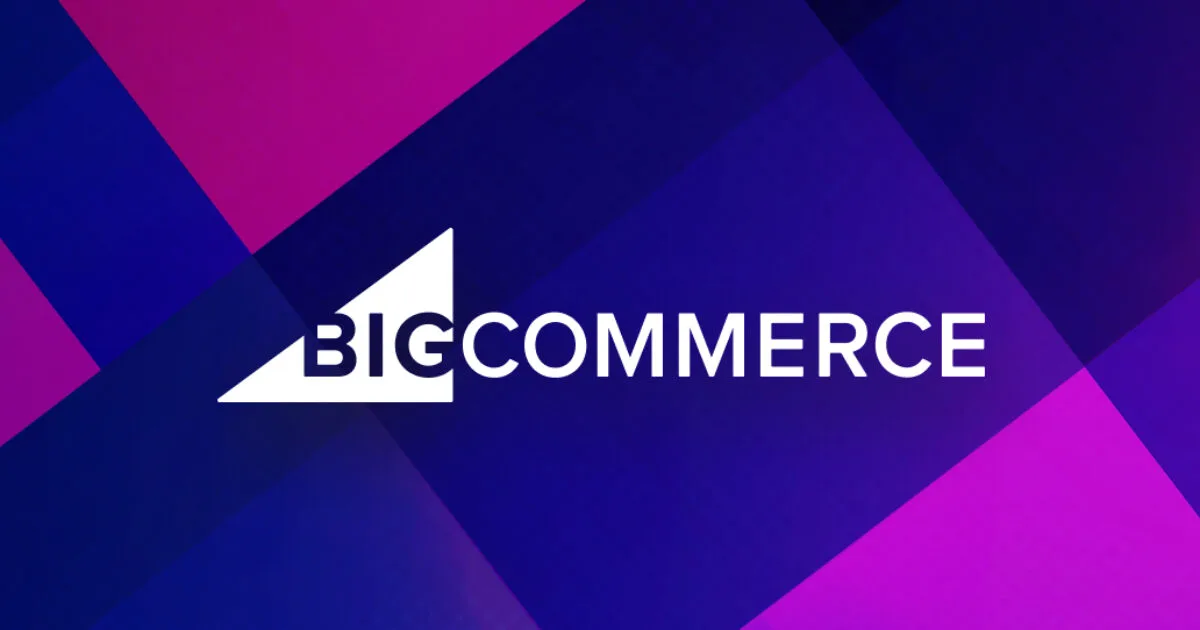
Ecommerce
Get The Print Version
Tired of scrolling? Download a PDF version for easier offline reading and sharing with coworkers.
A link to download the PDF will arrive in your inbox shortly.

Written by
Annie Laukaitis30/09/2025
What you’ll learn:
The most common ecommerce business models and how they apply to B2C, B2B, and beyond
Key technologies that power modern online stores — from CRMs and PIMs to shipping tools
How ecommerce benefits small businesses, startups, and enterprises alike
Trends shaping the future of ecommerce, including AI, social commerce, and mobile
Common mistakes new sellers make and how to avoid them
How BigCommerce helps brands scale smarter, reduce costs, and stay competitive
Ecommerce isn’t just reshaping retail. It’s rewriting the rules of global business.
In 2025, retail ecommerce sales worldwide will hit $3.6 trillion. By 2030, that number will surge past $4.9 trillion. And while the United States will lead with $1.17 trillion in revenue next year, ecommerce growth is accelerating in every region.
This shift is not limited to B2C. B2B ecommerce is booming, with global sales forecasted to hit $36 trillion by 2026, as digital-first buying becomes the new standard for procurement.
For brands and businesses at every stage, the message is clear: ecommerce is where the growth is. The time to build is now.

⏰ Isn't about time that you evaluated your ecommerce platform?
Request a demo to see how the BigCommerce platform is different.
What is ecommerce?
Ecommerce, short for electronic commerce, refers to the process of buying and selling goods or services over the internet.
It involves online transactions between businesses and consumers (B2C), between businesses themselves (B2B), or between individual consumers (C2C).
Ecommerce can take place across various digital channels, including websites, mobile apps, social media platforms, and online marketplaces.
For businesses, it enables global reach and 24/7 operations. For consumers, it provides convenience, accessibility, and a broader selection of products and services than traditional retail can offer.
Types of ecommerce business models
Generally, there are seven main models of ecommerce that businesses can be categorised into, each catering to different audiences and types of transactions. Let’s review each type in more detail.
Business-to-consumer (B2C).
This is the most familiar ecommerce model for everyday shoppers, where businesses sell products or services directly to individual consumers.
B2C ecommerce involves transactions between a business and a consumer.
A common example is purchasing shoes from an online retailer.
Well-known B2C ecommerce brands include Walmart, Target, and Sephora.
This is one of the most widely used ecommerce business models.
Business-to-business (B2B).
B2B ecommerce involves transactions between companies, often supporting supply chains, services, and bulk purchasing across industries.
Unlike B2C, B2B ecommerce is not consumer-facing.
It includes online sales between businesses, such as manufacturers and wholesalers or retailers.
Many popular tech companies operate under this model, including HubSpot, Slack, and Microsoft.
B2B ecommerce powers sectors like SaaS, manufacturing, logistics, and distribution.
Consumer-to-consumer (C2C).
C2C ecommerce enables individuals to buy and sell directly to each other, often through third-party marketplaces.
One of the earliest forms of ecommerce, C2C involves transactions between consumers.
These sales are typically facilitated by platforms like eBay, Amazon, or Facebook Marketplace.
A common example is selling used items through Craigslist or a local buy-sell-trade group.
The platform typically handles listing, payment processing, and sometimes shipping.
Direct-to-consumer (DTC).
DTC ecommerce allows brands to build direct relationships with customers by skipping intermediaries like retailers or wholesalers.
In this model, businesses sell straight to the end customer.
DTC brands often use their own websites or apps to manage the full customer experience.
Examples include subscription-based services like Netflix or Dollar Shave Club.
Many DTC brands also sell digital products, such as templates, software, or online courses.
Consumer-to-business (C2B).
C2B ecommerce reverses the typical selling model by allowing individuals to offer value to businesses, rather than the other way around.
In this model, consumers provide products or services that businesses purchase.
A common example is a photographer selling stock images to a platform like iStock.
Influencers promoting products or services to brands also fall under C2B.
This model is growing with the rise of content creators, freelancers, and digital marketplaces.
Business-to-government (B2G).
B2G ecommerce involves businesses providing goods or services to government agencies through digital platforms.
This model includes transactions between private companies and public sector institutions.
Businesses may offer solutions like legal software, cybersecurity tools, or infrastructure services.
For example, a SaaS company might sell software for processing social security claims or managing legal records.
B2G contracts often involve compliance standards and longer sales cycles.
Consumer-to-government (C2G).
C2G ecommerce enables individuals to interact with government services online, often through platforms that simplify payments or requests.
This model includes consumers paying for public services via digital channels.
Common examples include paying utility bills, taxes, or permit fees through government websites.
C2G platforms help streamline communication between individuals and government entities.
These systems often support recurring payments, service requests, or form submissions.
Sizes of ecommerce business models
From small startups to large enterprises, ecommerce businesses can come in all sizes. Let’s look at the main four you’re likely to come across.
Enterprise.
Enterprise ecommerce businesses operate at scale, often managing complex operations across multiple channels, regions, and customer types.
These businesses typically offer a wide range of products or services.
Their audiences often include both consumers and other businesses.
Enterprise ecommerce requires flexible, high-performance platforms that can integrate with large tech stacks.
Mizuno USA, for example, is one of the most recognisable sportswear brands in the world. To support growth, the brand needed an ecommerce platform that would help them optimise their tech stack and stay ahead of evolving consumer expectations.
"Mizuno USA was using a monolithic legacy solution that was heavily customised over the years, and that made innovation challenging. It limited their ability to experiment, try new things, or run necessary campaigns," said Sergei Ostapenko, CEO of Mira Commerce. "They needed a tech stack that balanced form, function, and performance, and BigCommerce's composable solution was the perfect fit."
Mid-market.
Mid-market ecommerce businesses fall between small operations and large enterprises, often balancing growth with increasing complexity.
These businesses are typically measured by annual revenue, number of employees, or operational scale.
They require flexible platforms that can scale with their growth while remaining cost-efficient.
Mid-market brands often prioritise personalised service, regional expansion, and backend efficiency.
A great example is Chair King Backyard Store, a Texas-based outdoor furniture retailer. As a large-scale furniture brand, Chair King offers white-glove delivery and localised selling, which meant it needed a customisable checkout experience. Turning to BigCommerce, the furniture brand found the features and functionality to enhance its user experience.
“BigCommerce is a better user experience for our customers, and it's also a better user experience for the team that's supporting it,” explained Kristen Brown, Director of Ecommerce for Chair King. “It's definitely pushed us forward even within our space. I think we have one of the more updated websites for the niche market that we're in.”
Small business.
Small businesses make up the backbone of the ecommerce economy, offering specialised products or services with leaner teams and tighter budgets.
These businesses can be sole proprietorships, partnerships, or small corporations.
They typically have fewer employees and lower annual revenue compared to large enterprises.
According to the US Small Business Administration, a small business may have 100 to 1,500 employees or $1 million to over $40 million in annual receipts, depending on the industry.
Ecommerce allows small businesses to expand their reach without the overhead of physical storefronts.
Wheels and Wings Hobbies, for example, is a small business hobby shop making big moves in the ecommerce space. With BigCommerce powering its commerce engine, the brand has amplified its user experience for both shoppers and backend teams.
“People say it’s so hard to get good technology for a good price, but BigCommerce is literally right there,” shared Dan McCowan, Owner of Wheels and Wings.
Startups.
Startups are early-stage businesses built to launch innovative products or services, often with small teams and high-growth potential.
Most startups have fewer than 100 employees, though they are often defined more by agility and scalability than size.
These businesses prioritise speed to market, adaptability, and cost-effective tools.
Choosing the right ecommerce platform early on can help set the foundation for long-term success.
Molly Mutt, a company selling high-quality dog beds and crate accessories, is a prime example. With a lean team and a growing business, the brand needed an ecommerce platform for startups that was fully customisable, easy to set up, and could scale with the business.
“We've enjoyed developing on BigCommerce because we can customise where we need to, but the base functionality is rock solid so we can always depend on that,” explained Matthew Coles, Account Director at Modelic, Molly Mutt’s agency partner. “But then we still have some freedom to do some interesting workarounds and customisations to make sure that we're servicing the end customer well.”
Growth of ecommerce
Ecommerce has evolved dramatically, from CompuServe in 1969 to today’s global digital economy. What once was a niche convenience is now a core part of how businesses operate and consumers shop.
The rise of smartphones and widespread use of mobile devices has made it easier than ever for shoppers to browse, compare, and purchase products from anywhere, at any time.
Key growth highlights show:
U.S. retail ecommerce sales grew from $27.6 billion in 2000 to nearly $1.2 trillion in 2024.
The global B2B ecommerce market reached $19.34 trillion in 2024, with projections of $47.54 trillion by 2030.
As of February 2025, 5.56 billion people, 67.9% of the global population, were internet users.
From early experimentation to exponential growth, ecommerce has become essential to the modern economy, spanning industries, business models, and borders.
Ecommerce trends to watch for in 2025.
The ecommerce industry is evolving fast. In 2025, global sales will surpass $3.6 trillion, driven by new technologies and changing shopper behaviours.
Here are the top trends reshaping how brands sell online:
AI automation powers personalised experiences, content creation, and predictive insights — helping brands work smarter, not harder.
Augmented reality (AR) in ecommerce will grow from $5.8 billion in 2024 to $38.5 billion by 2030, with a 35.8% CAGR.
Blockchain is gaining traction, with the global market projected to reach $943 billion by 2032, up from $17 billion in 2023.
Mobile commerce will account for over 60% of ecommerce sales by 2027, making mobile-first design a must.
Composable commerce and headless architecture give brands the freedom to innovate fast.
B2B buyers are demanding self-service tools, dynamic pricing, and modern UX.
BigCommerce makes it easy to adopt and scale these innovations, so you can stay ahead of what’s next.
What technology is involved in ecommerce?
Building a successful ecommerce business starts with the right tech stack. While your needs may evolve as you grow, there are foundational tools every online store should have.
Here’s what you’ll need:
An ecommerce platform to power your storefront and manage the shopping experience
Payment gateways to securely process online transactions
Order and shipping systems to fulfil purchases quickly and accurately
Customer relationship management (CRM) tools to track and engage your buyers
Inventory management systems to keep stock levels optimised
Marketing automation tools to drive traffic, conversions, and retention
Analytics platforms to measure performance and guide smarter decisions
In the sections that follow, we’ll break down each technology category and how it supports your ecommerce operations from launch to scale.
Ecommerce platform.
Your ecommerce platform is the foundation of your online business. It powers your storefront, checkout, and core operations.
It supports key functions like product management, payment processing, marketing, and inventory.
SaaS platforms offer a hosted solution with built-in tools and lower maintenance overhead.
Popular options include BigCommerce, Shopify, and WooCommerce, each offering different levels of flexibility and scalability.
Choosing the right platform depends on your business size, complexity, and development resources.
With BigCommerce, businesses of all sizes, from startups to global enterprises, can grow on the same powerful platform and scale seamlessly as their needs evolve.
Payment gateways.
A payment gateway is essential for securely processing online transactions and completing sales on your ecommerce site.
It connects your store to banks and payment networks, enabling fast and secure payment authorisation.
Customers now expect flexible payment options, and their expectations impact conversion.
According to Baymard, 10% of shoppers will abandon their carts if they do not see their preferred payment method.
To reduce friction, ecommerce businesses should offer a range of payment options, including:
Credit and debit cards
Digital wallets like Apple Pay, Google Pay, and PayPal
Buy Now, Pay Later services such as Affirm, Klarna, or Sezzle
Cryptocurrency, for customers seeking decentralised payment alternatives
A well-integrated payment gateway supports customer trust, drives higher conversion rates, and helps build long-term loyalty.
Shipping and fulfilment.
Shipping and fulfilment are core to your ecommerce success. They ensure that orders are delivered accurately, quickly, and cost-effectively.
Reliable fulfilment builds trust and keeps customers coming back.
Efficient shipping processes reduce delays, errors, and manual overhead.
Customers expect transparency, real-time updates, and fast delivery options.
With BigCommerce, merchants can streamline their operations using a comprehensive suite of tools, including real-time shipping quotes, automated order fulfilment, and seamless integration with major carriers like USPS, UPS, and FedEx. This ensures that customers receive their orders quickly and accurately, enhancing their overall shopping experience and driving customer satisfaction.
Data and analytics.
Data is one of the most powerful tools for growing an ecommerce business. It helps you understand what is working, what is not, and where to go next.
Analytics reveal how customers interact with your site, products, and marketing campaigns.
Performance data helps optimise inventory, pricing, and merchandising.
Tracking KPIs like conversion rate, average order value, and customer lifetime value can guide smarter decisions.
With advanced analytics tools, you can:
Identify top-performing products and channels
Understand customer journeys and drop-off points
Monitor campaign ROI and marketing attribution
Forecast trends and demand to inform growth strategies
BigCommerce integrates with top analytics platforms and offers built-in reporting so you can make data-driven decisions with confidence.
Point-of-sale (POS).
A point-of-sale system bridges the gap between your online store and physical locations, helping you create a unified shopping experience.
A modern POS allows you to manage in-person transactions alongside online orders.
It syncs inventory, customer data, and order history across channels in real time.
Shoppers expect a consistent experience whether they buy online, in-store, or both.
With the right POS system, you can:
Accept payments in physical retail locations or pop-up shops
Connect your ecommerce and brick-and-mortar inventory
Offer flexible fulfilment options like in-store pickup or local delivery
Gain visibility into total sales performance across all touchpoints
BigCommerce integrates with leading POS providers, helping you deliver a seamless omnichannel experience that builds trust and drives loyalty.
Enterprise resource planning (ERP).
ERP software helps businesses automate and connect key operations, creating a unified view of performance across departments.
ERPs manage processes like finance, supply chain, human resources, and customer relationship management.
They centralise data from multiple systems, reducing silos and improving decision-making.
A well-integrated ERP improves efficiency, accuracy, and cross-team collaboration.
With ERP integration, ecommerce businesses can:
Sync inventory and financial data in real time
Automate accounting, procurement, and fulfilment tasks
Streamline reporting with a single source of truth
Connect systems across logistics, marketing, and customer service
BigCommerce supports ERP integrations with platforms like NetSuite, Acumatica, Microsoft Dynamics, and more, helping brands scale with confidence.
Product information management (PIM).
A PIM system centralises your product data, making it easier to manage and distribute across all your sales and marketing channels.
It collects, organises, and enriches product content from a single source.
Your PIM can sync product information to your ecommerce platform, ERP, order management system, and marketing tools.
This ensures consistency and accuracy, no matter where your products appear.
With a PIM, you can:
Manage large product catalogues efficiently across multiple channels
Ensure consistent product titles, descriptions, and specifications
Streamline product launches and updates across global storefronts
Improve data quality and reduce manual entry or duplication
BigCommerce integrates with top PIM providers, helping brands scale product operations while maintaining a seamless customer experience.
Inventory management.
Effective inventory management is critical to maintaining cash flow, avoiding stockouts, and meeting customer demand.
Inventory represents a major financial investment, both in cost and storage.
Whether you manage your own stock or use dropshipping, accuracy and visibility are essential.
Modern systems help you track inventory in real time and automate replenishment.
With an inventory management system, you can:
Monitor stock levels across warehouses, channels, or suppliers
Sync inventory with orders to prevent overselling
Forecast demand and plan for seasonal or promotional spikes
Reduce carrying costs and avoid overstocking
BigCommerce integrates with inventory management solutions to keep your operations aligned and your customers satisfied.
Marketing integrations.
Marketing integrations help you connect with customers at every stage of their journey, from first click to repeat purchase.
They make it easier to launch campaigns across email, social media, search, and more.
Many ecommerce platforms offer built-in tools or plug-and-play integrations to extend your marketing reach.
The right setup ensures your messaging stays consistent across channels and devices.
With marketing integrations, you can:
Automate email marketing with tools like Klaviyo or Mailchimp
Run paid campaigns across Google, Facebook, and Instagram
Improve SEO with built-in tools for metadata, sitemaps, and schema markup
Use dynamic ads and retargeting to bring shoppers back
BigCommerce integrates with leading marketing tools, so you can create personalised, omnichannel experiences that drive engagement and conversions.
Product feed management.
To reach customers across multiple channels, you need consistent, optimised product data wherever your products appear.
Product feed management tools help sync listings across marketplaces, ad networks, and social platforms.
These tools ensure product titles, descriptions, images, and prices are accurate and up to date.
Centralising your product feed reduces manual work and improves campaign performance.
With product feed management, you can:
Distribute product listings to channels like Google Shopping, Amazon, Meta, and TikTok
Optimise feeds to meet platform-specific requirements
Eliminate inconsistencies that could cause disapprovals or ad performance issues
Improve visibility, click-through rates, and return on ad spend
BigCommerce integrates with Feedonomics, a full-service feed management solution that helps businesses automate, optimise, and scale their omnichannel strategy.
Customer relationship management.
A CRM system helps you build stronger customer relationships by centralising data and enabling more personalised interactions.
It stores valuable information like order history, contact preferences, and engagement patterns.
This data can be used to segment audiences, tailor outreach, and support customer service.
A CRM becomes increasingly valuable as your business grows and customer touchpoints multiply.
With CRM tools, ecommerce businesses can:
Personalise marketing messages based on behaviour and purchase history
Automate follow-ups, promotions, and retention campaigns
Track customer lifetime value and buying frequency
Equip support teams with the context they need to resolve issues quickly
BigCommerce integrates with leading CRM platforms to help brands deliver tailored experiences that drive retention and long-term loyalty.
Benefits of ecommerce
Ecommerce has a number of advantages, from faster buying to the ability to reach large audiences 24/7. Let’s take a look in detail at some of the top perks ecommerce has to offer.
Reach new customers to increase sales.
Ecommerce opens the door to a wider audience by removing the limits of a physical storefront.
Your online store is accessible to anyone with an internet connection, 24/7.
You can expand into new regions or markets without needing a brick-and-mortar location.
Digital marketing strategies make it easier to reach high-intent shoppers.
With the right tools, you can:
Use SEO to capture organic traffic from search engines
Run social media and paid ads to reach targeted audiences
Leverage email marketing to re-engage visitors and nurture leads
BigCommerce helps brands scale their reach through multichannel integrations, customisable storefronts, and built-in marketing features that support growth from day one.
Scale and streamline operations.
Ecommerce gives businesses the tools to grow efficiently and operate with greater precision.
Automation reduces manual tasks and frees up your team to focus on strategy.
Centralised systems improve visibility across sales, inventory, and fulfilment.
Data-driven insights help you make smarter, faster decisions.
With the right ecommerce infrastructure, you can:
Automate order processing, shipping, and inventory updates
Sync data across platforms like your ERP, CRM, and marketing tools
Track performance in real time and adapt quickly to demand shifts
BigCommerce supports scalable growth with a flexible platform, native integrations, and open APIs, helping you streamline operations as you expand.
Gain customer insights.
Understanding your customers is key to building lasting relationships and driving repeat sales.
Ecommerce platforms provide access to valuable data like browsing behaviour, purchase history, and engagement trends.
These insights help you make informed decisions across marketing, merchandising, and customer support.
Personalisation becomes more effective when it’s backed by real customer data.
With customer insights, you can:
Segment audiences based on behaviour and preferences
Deliver personalised product recommendations and promotions
Identify patterns that improve campaign performance and product offerings
BigCommerce makes it easy to gather and act on customer data, giving you the insights you need to turn visitors into loyal buyers.
Sell globally.
Ecommerce makes it easier than ever to expand beyond borders and reach customers around the world.
Digital storefronts are accessible globally, 24/7, with no need for a physical presence.
Cross-border selling helps diversify revenue and reduce dependency on local markets.
Localisation tools allow you to tailor content, pricing, and promotions by region.
With the right platform, you can:
Offer multiple currencies and payment options
Display region-specific content and shipping rates
Manage international tax and compliance requirements
BigCommerce supports global growth with built-in features for localisation, multi-currency, and international shipping, helping you scale into new markets with confidence.
Low startup costs for small businesses.
Ecommerce makes it possible to launch a business without the overhead of a traditional retail setup.
There is no need to rent a storefront or hire in-person staff.
Many ecommerce platforms offer affordable plans with built-in tools to get started quickly.
Dropshipping and print-on-demand models reduce the need to hold inventory.
With minimal upfront investment, you can:
Build an online store and start selling within days
Test new products and markets without large capital commitments
Scale gradually based on demand and revenue growth
BigCommerce helps small businesses get off the ground with flexible pricing, low barriers to entry, and tools that support sustainable scaling.
Personalised shopping experiences.
Personalisation is no longer a bonus. It’s an expectation.
Shoppers want tailored experiences that reflect their preferences and behaviours.
Technologies like artificial intelligence (AI) and machine learning make this possible at scale.
Personalisation boosts engagement, conversion rates, and customer loyalty.
With personalisation tools, you can:
Recommend products based on browsing or purchase history
Trigger emails and ads based on real-time behaviour
Customise homepage content or offers by customer segment
BigCommerce integrates with leading personalisation tools, helping you create experiences that feel relevant, timely, and uniquely tailored to every shopper.
Ability to sell on other online channels.
Ecommerce gives you the flexibility to reach customers wherever they shop, not just on your website.
Selling through marketplaces, search engines, and social platforms expands your reach.
Multichannel selling increases brand visibility and meets shoppers on their preferred platforms.
Consistent product data across channels is key to success.
With the right tools, you can:
List products on marketplaces like Amazon, eBay, and Etsy
Run shoppable ads on Google, Facebook, and Instagram
Automate and optimise product listings across every channel
BigCommerce and Feedonomics makes multichannel selling seamless by integrating with leading sales and ad platforms, so you can grow revenue without duplicating work.
Challenges of ecommerce
Although modern ecommerce is increasingly flexible today, it still has its own setbacks. Here are some of the downsides in more detail.
Integrating with the current tech stack.
If your development team has invested heavily in your existing tech stack, integrating new tools or features can become challenging.
However, with BigCommerce's open APIs, businesses can seamlessly plug and play new functionalities, ensuring smooth integration and compatibility with their current systems.
Customer service and returns.
For customers who want to get hands-on with a product (especially in the realm of physical goods like clothing, shoes, and beauty products) before adding it to their shopping cart, the ecommerce experience can be limiting.
Consistency across channels.
With the growing need for omnichannel commerce, ecommerce businesses face the challenge of creating a consistent user experience across multiple channels.
Online brands must cater to customers across social media, mobile apps, online marketplaces, in-store, live chat, and more.
Competition.
With a low barrier of entry comes an increasing number of competitors.
To stay ahead, businesses must continuously innovate their marketing strategies to maximise ROI and differentiate themselves in a crowded ecommerce market, ensuring their offerings resonate with target audiences effectively.
Shipping and fulfilment.
Depending on the size of your business and product catalogue, managing shipping and fulfilment can be a huge pain point, especially if you’re working with multiple suppliers.
Data security.
As an ecommerce business, you’ll have a huge responsibility to protect the privacy of your customers.
Implementing robust encryption and regular security audits are essential to protect against fraud, cyber threats, and data breaches, ensuring customer trust and compliance with industry standards.
Understanding international trade and compliance.
If you decide to go into global ecommerce, you’ll need to be able to navigate diverse regulatory landscapes.
From data protection laws like GDPR to product safety regulations and taxation requirements, ecommerce businesses must meticulously assess and adhere to various regional regulations.
Rising consumer expectations.
In the age of same-day shipping and AI chatbots, ecommerce is making shopping more fast, convenient, and accessible than ever — and shoppers expect more and more.
As an ecommerce business, you’ll need to be continually in lock step with changing consumer expectations.
Technical issues.
If your ecommerce website is slow, broken, or unavailable to customers, this may impact your ability to make sales.
Site crashes and technology failures can damage relationships with customers and negatively impact your bottom line.
Common mistakes new ecommerce sellers make
Starting an ecommerce business is exciting, but it comes with a learning curve. Avoiding common pitfalls early can save time, money, and frustration.
Skipping research: Many new sellers jump in without validating product demand or understanding their audience. Market research and competitor analysis are critical first steps.
Choosing the wrong platform: Selecting a platform that doesn’t align with your goals or tech stack can lead to costly replatforming later.
Neglecting mobile optimisation: With mobile expected to drive over 60% of ecommerce sales by 2027, a non-responsive site can mean lost revenue.
Underestimating fulfilment complexity: Delayed or inaccurate orders damage trust. Invest in reliable shipping and inventory processes from the start.
Overcomplicating the tech stack: Start lean. Use built-in tools and grow your integrations as your business scales.
BigCommerce helps new sellers avoid these traps by providing scalable tools, expert resources, and a flexible platform that grows with your business.
Steps to launching your ecommerce business
If you're just getting started, launching your ecommerce store may seem overwhelming. Breaking it into manageable steps helps turn your idea into action.
Define your niche and audience: Research your market, identify your target customer, and choose products that solve real problems or meet specific needs.
Choose the right ecommerce platform: Look for a solution that fits your goals, offers the flexibility to grow, and provides essential tools like payments, SEO, and integrations. BigCommerce is built for growth at every stage.
Build and brand your storefront: Design a customer-friendly shopping experience that reflects your brand. Customise your homepage, product pages, navigation, and checkout.
Set up operations: Connect shipping providers, configure taxes, choose payment gateways, and organise your inventory. Streamline with tools that reduce manual work.
Launch and market your store: Promote your launch with email marketing, social media, and search ads. Monitor performance and optimise your campaigns as you grow.
With the right tools and planning, you can launch confidently and scale faster.
How BigCommerce helps ecommerce brands
BigCommerce is built to help brands grow smarter, not just bigger.
Whether you're a fast-scaling DTC brand or an established B2B business expanding online, BigCommerce offers the flexibility, performance, and tools needed to thrive in today’s competitive ecommerce landscape. Here's how:
Convert more shoppers into customers.
With built-in conversion tools like optimised checkout, faceted search, and support for digital wallets and Buy Now, Pay Later (BNPL) providers, BigCommerce helps reduce friction and boost conversion rates.
Brands can also tap into advanced promotions, A/B testing, and powerful analytics to fine-tune the shopping experience and turn more browsers into buyers.
Cut down on operational costs.
BigCommerce’s SaaS model eliminates the need for costly hosting and maintenance while offering enterprise-grade performance and security.
The platform’s open API architecture and automation capabilities reduce manual tasks, helping teams do more with fewer resources and lowering total cost of ownership over time.
Customisable storefronts and integrations.
BigCommerce supports a wide range of front-end solutions and back-end integrations, giving merchants the power to build exactly what they need without compromise.
From payment gateways and ERP systems to shipping providers and CRMs, merchants can tailor their tech stack while maintaining speed, security, and scalability.
Create stunning composable storefronts.
BigCommerce gives customers the freedom to build blazing-fast, beautifully branded storefronts using Catalyst — its composable storefront framework built on Next.js.
Catalyst provides the tools developers need to create modern experiences with complete design control and faster time to market.
Whether you're launching a campaign landing page or redesigning your entire storefront, Catalyst makes it easier to deliver immersive shopping experiences that stand out and perform across every device.

Ebook: Win Customers Across Every Channel
Get expert insights on data, branding, and marketing strategies to grow sales on every major ecommerce channel.
The final word
Today’s brands need more than a storefront. They need flexibility, scalability, and the ability to meet rising customer expectations across every channel.
That’s where BigCommerce stands out.
With a modern tech stack, open architecture, and tools built for both B2C and B2B growth, BigCommerce empowers businesses to:
Scale efficiently with built-in flexibility
Reach more customers across channels and regions
Deliver personalised experiences that drive conversion and loyalty
Streamline operations to reduce costs and improve performance
Whether you're launching your first product or replatforming at the enterprise level, BigCommerce gives you the tools and support to grow smarter and faster.
Ready to see what’s possible? Request a demo and explore how BigCommerce can help your business lead the future of ecommerce.
FAQs about ecommerce
Often the most successful ecommerce sites are the ones that focus on creating a memorable customer experience, and it all starts with having the right ecommerce website builder to power your site.
Here are some examples of successful ecommerce sites from our very own BigCommerce merchants:
To see more examples of ecommerce in action, check out our Case Study page.
Yes, ecommerce is growing. According to Statista, US revenue will hit $1.17 trillion by the end of 2025, and growth at an annual rate of 5.59%.
Yes, ecommerce is safe as long as your business takes the right precautions. Using a trusted ecommerce platform with built-in security features like SSL encryption, secure payment gateways, and fraud protection helps protect your customers' data and builds trust. It's also important to stay up to date with compliance standards and perform regular security audits to keep your ecommerce store secure.
An ecommerce website should include essential features like product pages, a secure checkout, shopping cart, payment processing, and mobile responsiveness. Other important tools include search functionality, customer reviews, SEO capabilities, and integrations with marketing, inventory, and fulfilment systems.
Customer service is key to building trust, driving repeat business, and increasing customer satisfaction. Quick responses, clear communication, and flexible return policies all contribute to a positive shopping experience and help set your brand apart in a competitive market.
Yes, dropshipping is a type of ecommerce business model. Instead of holding inventory, dropshippers partner with third-party suppliers who fulfil orders directly to customers. This allows brands to sell products online without managing storage or shipping logistics.
Ecommerce, short for “electronic commerce,” is the buying and selling of products or services online. It includes various digital channels such as social media, mobile apps, and online marketplaces, spanning multiple models like business-to-consumer (B2C), business-to-business (B2B), and hybrid approaches like business-to-consumer-business (B2C2B).
The best ecommerce platforms for small businesses offer low startup costs, built-in tools, and the flexibility to scale. Key features to look for include mobile optimisation, multichannel selling, and integrations with essential apps.
Platforms like BigCommerce, Shopify, and Wix are popular choices, but each serves different needs. For entrepreneurs launching a new business, BigCommerce stands out with features designed for growth, including support for social commerce, custom checkout experiences, and native integrations with leading sales channels.
If you're transitioning from a physical store or expanding beyond brick-and-mortar stores, an ecommerce platform can help unify your in-person and online shopping experiences.
The cost of starting an ecommerce business varies widely depending on your product, tech stack, and marketing strategy.
For most entrepreneurs, initial expenses include your ecommerce platform, domain name, product inventory (unless you dropship), branding, and marketing. Some businesses may also invest in apps for SEO, customer service, or social commerce.
Unlike brick-and-mortar stores, ecommerce businesses can launch without leasing space or hiring a full team, significantly reducing overhead. You can start small and scale your online purchases volume over time, keeping costs aligned with revenue growth.
Yes, ecommerce continues to grow across industries, regions, and customer segments.
From small entrepreneurs to large enterprises, businesses are embracing e-commerce transactions as more consumers prefer online shopping over visiting a physical store. Mobile experiences, social commerce, and flexible sales channels are driving this shift.
At the same time, changes in how people shop, like paying with credit cards, digital wallets, or buy now, pay later options, are fuelling faster checkout and higher retail sales online.
For businesses of all sizes, the future of selling is digital, and the momentum shows no signs of slowing down.

Discover How to Master Personalisation in the Age of AI
Users expect personalised and user-friendly websites more than ever. Learn how you can give them the experience they want.














